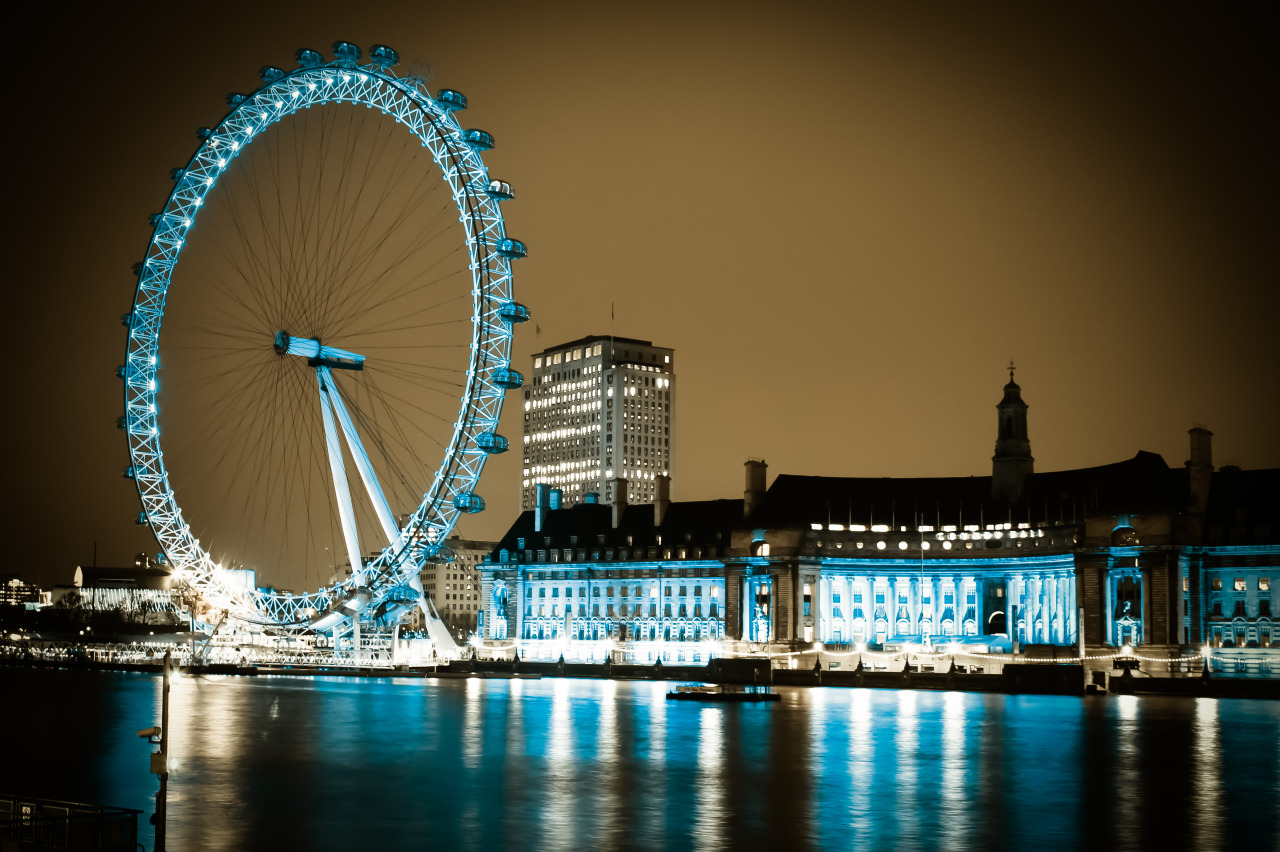The London Eye is a giant Ferris wheel on the South Bank of the River Thames in London, England. Also known as the Millennium Wheel, its official name was originally the British Airways London Eye, then the Merlin Entertainments London Eye, and since January 2011, the EDF Energy London Eye.
The entire structure is 135 metres (443 ft) tall and the wheel has a diameter of 120 metres (394 ft). It is currently Europe's tallest Ferris wheel, the most popular paid tourist attraction in the United Kingdom with over 3.5 million visitors annually, and has made many appearances in popular culture.
When erected in 1999 it was the world's tallest Ferris wheel, until surpassed first by the 160 m (520 ft) Star of Nanchang in 2006 and then the 165 m (541 ft) Singapore Flyer in 2008. Supported by an A-frame on one side only, unlike the taller Nanchang and Singapore wheels, the Eye is described by its operators as "the world's tallest cantilevered observation wheel". It offered the highest public viewing point in the city[citation needed] until it was superseded by the 245-metre (804 ft) observation deck on the 72nd floor of The Shard, which opened to the public on 1 February 2013.
The London Eye adjoins the western end of Jubilee Gardens (previously the site of the former Dome of Discovery), on the South Bank of the River Thames between Westminster Bridge and Hungerford Bridge, in the London Borough of Lambeth.
The London Eye was designed by architects Frank Anatole, Nic Bailey, Steve Chilton, Malcolm Cook, Mark Sparrowhawk, and the husband-and-wife team of Julia Barfield and David Marks.
Mace were responsible for construction management, with Hollandia as the main steelwork contractor and Tilbury Douglas as the civil contractor. Consulting engineers Tony Gee & Partners designed the foundation works while Beckett Rankine designed the marine works.
Nathaniel Lichfield and Partners assisted The Tussauds Group in obtaining planning and listed building consent to alter the wall on the South Bank of the Thames. They also examined and reported on the implications of a Section 106 agreement attached to the original contract. Later, they also prepared planning and listed building consent applications for the permanent retention of the attraction, which involved the co-ordination of an Environmental Statement and the production of a planning supporting statement detailing the reasons for its retention.
The rim of the Eye is supported by tensioned steel cables and resembles a huge spoked bicycle wheel. The lighting was redone with LED lighting from Color Kinetics in December 2006 to allow digital control of the lights as opposed to the manual replacement of gels over fluorescent tubes.
The wheel was constructed in sections which were floated up the Thames on barges and assembled lying flat on piled platforms in the river. Once the wheel was complete it was lifted into an upright position by a strand jack system made by Enerpac. It was first raised at 2 degrees per hour until it reached 65 degrees, then left in that position for a week while engineers prepared for the second phase of the lift. The project was European with major components coming from six countries: the steel was supplied from the UK and fabricated in The Netherlands by the Dutch company Hollandia, the cables came from Italy, the bearings came from Germany (FAG/Schaeffler Group), the spindle and hub were cast in the Czech Republic, the capsules were made by Poma in France (and the glass for these came from Italy), and the electrical components from the UK.
Source:
Picture:Link:
Wikipedia:Link:

0 comments:
Post a Comment